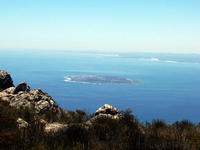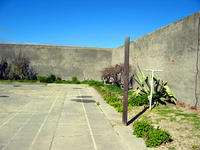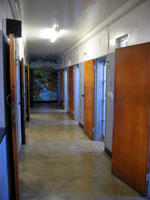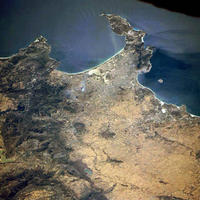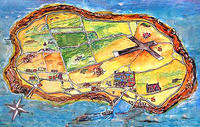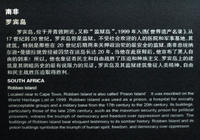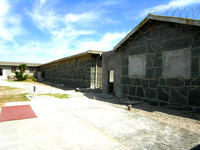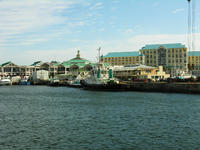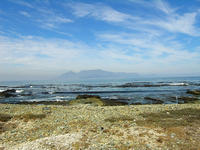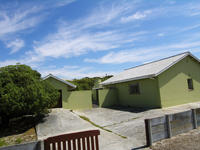You are in: Africa -> South Africa -> Robben Island, and traditional search or Image Gallery will yield results of this site only
Robben Island
| Site number: | 916 |
|
| Type of site: | Cultural | |
| Date: | 17-20th century | |
| Date of Inscription: | 1999 | |
| Location: | Africa, South Africa, Western Cape Province | |
Up to 75 images are shown here. Click on each for more details or on Image Gallery for more images.
Six official UN languages:
Arabic,
Chinese,
English,
French,
Russian,
Spanish
Other languages: Afrikaans, Danish, Dutch, Esperanto, Finnish, Galician, German, Hungarian, Italian, Japanese, Luxembourgish, Norwegian-bokmål, Portuguese, Swahili, Swedish
Other languages: Afrikaans, Danish, Dutch, Esperanto, Finnish, Galician, German, Hungarian, Italian, Japanese, Luxembourgish, Norwegian-bokmål, Portuguese, Swahili, Swedish
| Description: | At various times between the 17th and 20th centuries, Robben Island was utilized as a prison, a hospital for socially unacceptable groups as well as a military base. Its buildings, above all the late 20th century ones (for example the political prisoner maximum security prison), stand as witnesses to the triumph of democracy and freedom over oppression and racism. --WHMNet paraphrase from the description at WHC Site, where additional information is available. | |
| Robben Island (Afrikaans Robben Eiland) is an island in Table Bay, 12 km off the coast from Cape Town, South Africa and is located at 33.806734° S 18.366222° The name is Dutch for "seal island". (Incidentally, "Seal Island" is a different island in nearby False Bay.) Robben Island is roughly oval and about a kilometer wide. It is flat and only a few metres above sealevel, as a result of an ancient erosion event. The island is composed of Precambrian metamorphic rocks belonging to the Malmesbury Group. Robben Island was first inhabited thousands of years ago by stone age people, at a time when sea levels were considerably lower than they are today and people could walk to it. It was then a flat-topped hill. Towards the end of the last Ice Age the melting of the ancient ice caps caused sealevels to rise and the land around the island was flooded by the ocean. Since the end of the 17th century, Robben Island has been used to isolate certain people — mainly prisoners — and amongst its first permanent inhabitants were political leaders from various Dutch colonies, including Indonesia. From 1836 to 1931 the island was used as a leper colony. During the Second World War, the island was fortified and guns were installed as part of the defences for Cape Town. Robben Island became a maximum security prison in 1959. Between 1961 and 1991, over three thousand men were incarcerated here as political prisoners, including Nelson Mandela. During the time that the island was a prison, security was very tight and it was off limits to almost all civilians, including fishermen. Before about 1980 there was not one citizen in 10,000 in Cape Town who had set foot on the island. It is not generally known that the use of the island as a prison was greatly inhibited for centuries by a lack of fresh water. The island is arid, with low scrubby vegetation and has no watercourses. Boreholes were drilled in the first half of the 20th century but in due course the fragile water table was invaded by sea water and the bores became useless. Sometime after 1965 a pipeline was laid on the bottom of the ocean from Cape Town. --Wikipedia. Text is available under the Creative Commons Attribution-ShareAlike License. | ||
| Source: | http://whc.unesco.org/en/list/916 | |
| Reference: | 1. UNESCO World Heritage Center, Site Page. | |



